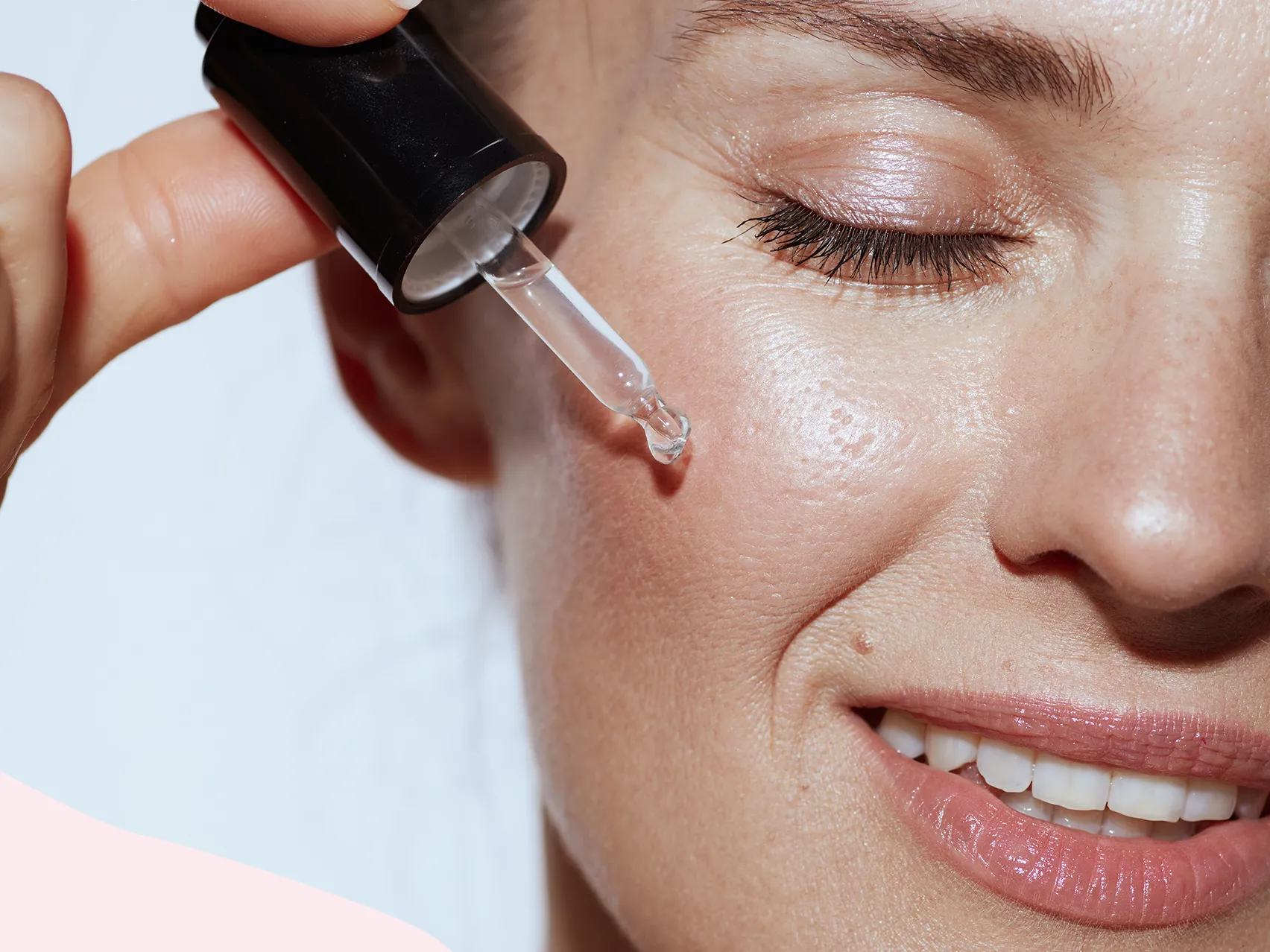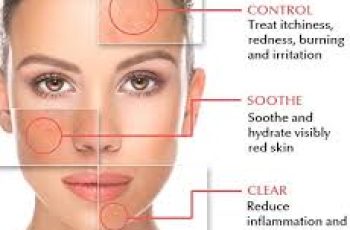What can you put on your skin to improve your skin while you’re waiting for retinol to work?
We love retinol and it really delivers on its promises. The downside is that, while it’s effective, it can make your skin look worse for a short period of time before it gets better. If you’re not sure what I’m talking about, this is a common side effect that happens when you first introduce retinol into your routine. The skin starts to get dry, red, flaky, and feel tight, itchy, and uncomfortable.
This happens to anyone using retinol for the first time, but I know you want to avoid it, and that’s what we’re going to talk about in today’s blog post. So if you want to learn more about what you can put on your skin to improve your skin while you’re waiting for retinol to work, stay tuned.
Don’t forget, The Beauty Insiders has a series of blog posts about retinol if you want to learn more about retinol and how it works.
How can I increase the effectiveness of retinol?
The best way to increase the effectiveness of retinol is to apply it to your skin properly. Many people often feel like they need to use retinol more often to get quick results. The problem is that retinol doesn’t like to be rushed. To reap the benefits of this powerful product, slowly introduce it into your daily routine. If you are new to retinol and have not yet incorporated it into your daily routine, here is an example of the most effective way to incorporate it into your routine.
Start by applying retinol to your skin once a week.
Once your skin has developed some tolerance, you can increase the frequency of applications to twice a week. You can then increase it to up to three applications per week.
Always use retinol products at night, as they lose their effectiveness when exposed to the sun.
After using retinol products, use a serum or moisturizer that contains hydrating ingredients like hyaluronic acid to counteract the drying effects of retinol.
Granted, it takes a lot of patience and time to use retinol optimally, but if you follow my advice, you will be amazed at the results.
How do I prepare my skin for retinol?
As I mentioned before, the way you use retinol affects how it works on your skin. I will now tell you the best routine to follow when incorporating retinol into your skincare routine. This is just an example. Everyone has different skin. Therefore, if you are concerned about incorporating retinol into your daily routine, you should seek the advice of your doctor or dermatologist to avoid severe irritation and reactions.
Step 1: Make sure the skin is clean and free of makeup or other skincare products.
Step 2: Wait until the skin is completely dry before using a retinol product. This is important because applying retinol to damp skin can cause it to penetrate too deeply into the skin and lead to increased irritation.
Step 3: Apply a pea-sized amount of retinol to your face and work it into the skin using circular motions.
Step 4: Once the retinol has been absorbed, follow up with a moisturizer that contains hydrating ingredients.
Step 5: Always apply a daily SPF of 30 or higher in the morning to protect the skin from the sun. Do this every day, even if it’s cloudy or raining.
How long does it take for the skin to adjust to retinol?
You can expect it to take about three weeks for the skin to adjust to retinol. You’ll also notice that she’s also developed some tolerance to the retinoic acid during this time. In the early stages of using retinol, you will experience some degree of irritation, redness, peeling, and flaking. These side effects are often referred to as retinol ugly (more on that later!), and they don’t usually last more than three to four weeks. If you find that they last for a long time, you may want to switch to a formula with a lower retinol percentage. However, if side effects persist, you must stop using the retinol product and consult a doctor or healthcare professional.
Should hyaluronic acid be used before retinol?
Yes, you can. This is considered a good idea to keep the skin’s protective barrier strong and protect it from free radicals (such as Protects against UV rays, pollution, and other environmental aggressors that can cause long-term damage to your skin. You’ll also find that hyaluronic acid acts as a humectant, attracting and binding water to the skin’s surface, countering the drying effects of retinol.
If you want to learn more about using hyaluronic acid and retinol together, there’s a dedicated blog post that goes into more detail on how to use these powerful substances together.
Can you layer a serum over retinol?
Yes, absolutely, but remember that it’s best to avoid serums with ingredients that increase skin irritation. Avoid serums with salicylic acid, glycolic acid, or other chemical peels.
I mentioned the basic skin rules in a previous blog post, but you’ll need to use them on a daily basis. Consider it in your regular skin care routine. To get the benefits of the active ingredients in different formulas, you should apply the products in the thinnest to thickest consistency. This prevents a physical barrier from forming on the skin and prevents the active ingredients from penetrating the different layers of the skin.
What is Retinol Ugly?
Retinol Ugly is the name given to the common side effects that occur when you first introduce retinol into your skincare routine. These symptoms vary, from redness, flaking, and rashes to itchy and flaking areas of skin. Every retinol user experiences these side effects to some degree, and they usually only last three to four weeks at most.
Here’s more information on how to improve your skin while you’re waiting for retinol to work. If you have any other skincare questions, follow us on Instagram. You can reach me via DM!
DQH Knowledge drop: In your 20s, your skin cell turnover decreases. (Cell turnover is a key component in keeping your skin youthful.) You know what else slows down? Your collagen production. Starting in your 20s, collagen decreases by about 1 percent per year. Should you want to prevent fine lines and wrinkles, start by eliminating behaviors that contribute to premature aging. “If it’s bad for you, it’s bad for your skin,” says dermatologist Michel Somenek.
“Cigarette smoking reduces blood flow to the skin and causes premature wrinkling and a dull skin texture. Making the repeated pursed motion to inhale can also cause smoker’s lines. Alcohol and recreational drugs are toxins for the skin that damage its cellular structure and DNA,” Somenek tells us. “The faster you eliminate vices while you are young, the better chance your skin and body have to recuperate.” Also, adopting an anti-aging routine in your 20s is key. After all, the best offense is a good defense. We spoke to Somenek and experts Joshua Ross and Audrey Kunin to find out more.
Keep reading for the best anti-aging products for your 20s, according to skincare professionals.
Sunscreen
“We all know that the sun is the number one cause of skin aging and starting the prevention in your 20s is very important,” Ross says. “The majority of your sun damage won’t start to appear until you’re in your 30s, so don’t wait until you see it surface or you’ll be behind the curve. Stay ahead of it with a good-quality zinc-based sunscreen worn daily.”
Farmacy Green Defense Daily Mineral Sunscreen
An invisible sunscreen with SPF 30, plus botanical extracts meant to protect skin with tons of antioxidants. Bonus: It’s clean and fine to use under makeup.
Bareminerals Complexion Rescue™ Tinted Moisturizer Broad Spectrum SPF 30
Although we recommend you use your SPF and moisturizer separately, we also understand moments when you don’t have time or energy for that extra step. For those times, this bareMinerals moisturizer is a great thing to have on hand.
Vitamin C Serum
“A great introduction to anti-aging is to start with a vitamin C serum in your morning skincare routine,” Ross says. “It’s a powerful antioxidant that will neutralize free radicals and brighten the skin.” He adds that it’s a great way to counteract the effects of the sun’s harmful rays, which, as previously mentioned, are among the biggest causes of premature aging.
Drunk Elephant C-Firma™ Vitamin C Day Serum
The Drunk Elephant C-Firma is a lightweight serum that promises to give skin a glow by combining the brightening powers of vitamin C with ferulic acid, l-ascorbic acid, and vitamin E. The included sodium hyaluronate is meant to replace hydration loss, so you shouldn’t have to deal with any irritation.
Sunday Riley C.E.O. Rapid Flash Brightening Serum
This potent serum is jam-packed with vitamin C (15 percent, to be exact), which means it’s a potential superstar at both brightening skin and dousing it in antioxidants.
Peptides
Using peptides on your skin has many benefits, says Somenek. “The skin barrier is what defends the body against pollution, UV rays, bacteria, and toxins. It can be damaged by several everyday factors. Using topical peptides aids in building a stronger barrier,” he says. “Peptides comprise elastic fibers, which are a type of protein. These fibers help to make skin appear taut and firm. Peptides can also help repair damaged skin, relieve inflammation, and even out skin tone. Some peptides can kill acne-causing bacteria that is common in 20-somethings.”
Kunin agrees, saying, “Peptides are an excellent entry point for supporting collagen.” She recommends looking for face and eye treatments that contain these collagen-boosting powerhouses.
Charlotte Tilbury Magic Eye Rescue Cream
This Charlotte Tilbury super-emollient eye cream has a base of coconut oil and shea butter (read: it’s incredibly hydrating). Botanicals plus peptides are meant to help reduce dark circles and boost collagen, respectively.
This creamy moisturizer serves up potent collagen-boosting peptides and pycnogenol, and antioxidant-rich vitamin C. “Instead of sitting on top of the skin, peptides penetrate the outer layer so they go deep. The ‘signals’ they send tell the cells to produce elastin and collagen, which are needed for youthful-looking skin,” explains Somenek.
At-Home Peel Pads
Remember that skin cell turnover fiasco we talked about earlier? One way to help support it is by exfoliating. “Exfoliation is important to help keep skin fresh and luminous,” Kunin says. She recommends using at-home peel pads as an easy and effective way to exfoliate.
“The goal in your 20s is to fight the slowing pace of cell turnover. It is wise to use products that gently exfoliate, yet still remove oil and other impurities. Products that have Alpha Hydroxy Acids (AHA) or Beta Hydroxy Acids (BHA) are a good choice.”
According to Somenek, you should only exfoliate two to three times a week. “People of all ages are guilty of over-exfoliating and that can be too much of a good thing,” he says.
Dermadoctor Kakadu C Intensive Vitamin C Peel Pad
A few swipes of this Derma Doctor powerful peel pad promise to leave your skin glowing and smooth, thanks to the seven (yes, seven) types of chemical exfoliants, including AHA and BHA. It also contains vitamin C via Kakadu plum extract for added brightening and antioxidant protection.
KEY INGREDIENTS Kakadu plum extract is sourced from the Kakadu plum, a fruit grown in northern Australia. It contains vitamin C, which restores the skin’s natural barrier, increases collagen production, and soothes irritation.
Dr. Dennis Gross Skincare Alpha Beta® Universal Daily Peel Pads
These are the gold standard of peel pads, with a cult following and over 900 five-star reviews on Sephora. They’re easy to use and contain a blend of anti-aging exfoliating acids.
Emollient Night Cream
“In your 20s, you need to start upping the hydration in your skincare routine. You may have been cautious of over-moisturizing because of acne in your teens, but as you enter your 20s, your skin transitions and becomes drier,” Ross says. “I recommend an emollient night cream added into your evening skincare regimen.”
“Twenty-somethings need to make sure that they are not using creams that will clog their pores and cause excess oil production,” says Somenek. Opt for non-comedogenic products.
Cerave Skin Renewing Night Cream
One great choice is the CeraVe Skin Renewing Night Cream, which is a non-comedogenic night cream that leaves skin soft and glowy. It combines the moisturizing powers of ceramides and hyaluronic acid.
RoC Retinol Correxion Max Hydration Creme
“The best night cream ingredients contain retinol, benzoyl peroxide, and/or salicylic acid or hyaluronic acid. The goal is to moisturize, yet remove excess oil,” says Somenek. This Roc Retinol Correxion cream fits the bill as it contains both hyaluronic acid and retinol so it promises to moisturize while also being non-comedogenic.



